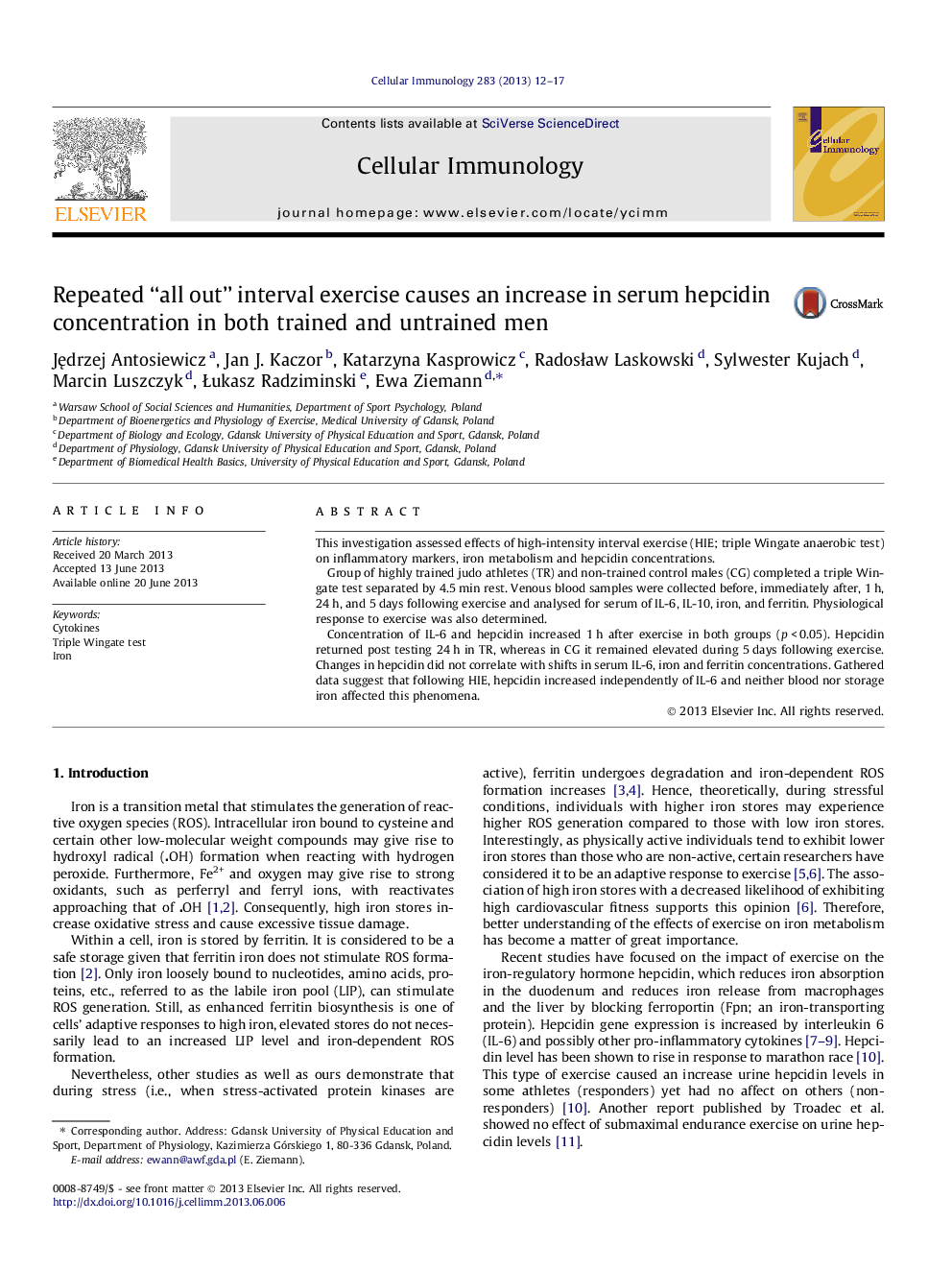| کد مقاله | کد نشریه | سال انتشار | مقاله انگلیسی | نسخه تمام متن |
|---|---|---|---|---|
| 2167098 | 1549408 | 2013 | 6 صفحه PDF | دانلود رایگان |

• The low volume high intensive interval exercise causes an increase in serum hepcidin.
• Hepcidin response to the exercise is similar in trained and untrained subjects.
• Trained subjects are characterised by higher hepcidin concentration at rest.
• Changes in hepcidin did not correlate with shifts in serum IL-6, iron and ferritin concentrations.
This investigation assessed effects of high-intensity interval exercise (HIE; triple Wingate anaerobic test) on inflammatory markers, iron metabolism and hepcidin concentrations.Group of highly trained judo athletes (TR) and non-trained control males (CG) completed a triple Wingate test separated by 4.5 min rest. Venous blood samples were collected before, immediately after, 1 h, 24 h, and 5 days following exercise and analysed for serum of IL-6, IL-10, iron, and ferritin. Physiological response to exercise was also determined.Concentration of IL-6 and hepcidin increased 1 h after exercise in both groups (p < 0.05). Hepcidin returned post testing 24 h in TR, whereas in CG it remained elevated during 5 days following exercise. Changes in hepcidin did not correlate with shifts in serum IL-6, iron and ferritin concentrations. Gathered data suggest that following HIE, hepcidin increased independently of IL-6 and neither blood nor storage iron affected this phenomena.
Journal: Cellular Immunology - Volume 283, Issues 1–2, May–June 2013, Pages 12–17